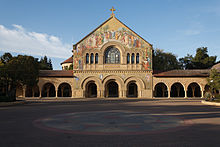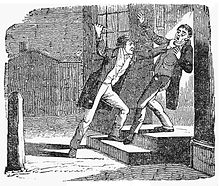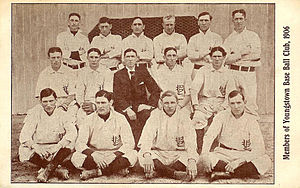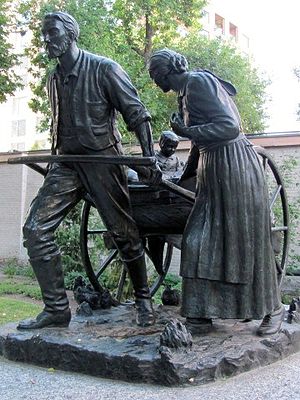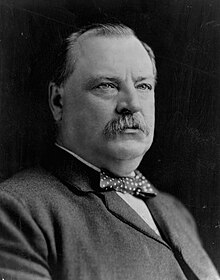
Back بوابة:الولايات المتحدة Arabic قيسارية:الولايات المتاحدة د ميريكان ARY Portal:ABŞ Azerbaijani Портал:САЩ Bulgarian প্রবেশদ্বার:মার্কিন যুক্তরাষ্ট্র Bengali/Bangla دەروازە:ویلایەتە یەکگرتووەکانی ئەمریکا CKB Portál:Spojené státy americké Czech Portal:USA Danish Portal:Vereinigte Staaten German Portal:DAY DIQ
Introduction

| |

| |
Did you know (auto-generated) -

- ... that after the Supreme Court of Ohio imposed restrictions on bail procedures, the dissenting justices participated in a bus tour to campaign for a ballot measure that took away their power on that issue?
- ... that the LACE satellite tracked rocket plumes from space for the United States's Star Wars program?
- ... that Jerold F. Lucey introduced phototherapy to the United States as a treatment for jaundice in newborns?
- ... that American artist Inez Demonet created watercolors of facial injuries for the War Department?
- ... that a graphic novel for teens was among the 10 most challenged books in the United States in 2023?
- ... that soprano Vera Curtis was the first singer trained exclusively in the United States to perform with the Metropolitan Opera?
- ... that, upon ordination, Earl K. Fernandes will be the first Indian-American Latin Catholic bishop in the United States?
- ... that in 1991, James F. Kelley claimed that he had been ordered to repatriate Amelia Earhart (who disappeared in 1937) to the United States, where she lived as Irene Craigmile Bolam?
Selected society biography -
Sherman served under General Ulysses S. Grant in 1862 and 1863. In 1864, Sherman succeeded Grant as the Union commander in the western theater of the war. He proceeded to lead his troops to the capture of the city of Atlanta, a military success that contributed decisively to the re-election of President Abraham Lincoln. Sherman's subsequent march through Georgia and the Carolinas further undermined the Confederacy's ability to continue fighting.
After the Civil War, Sherman became Commanding General of the Army (1869–83). As such, he was responsible for the conduct of the Indian Wars in the western United States. He steadfastly refused to be drawn into politics and in 1875 published his Memoirs, one of the best-known firsthand accounts of the Civil War.
Selected image -
Selected culture biography -
Zappa was married to Kathryn J. "Kay" Sherman from 1960 to 1964. In 1967, he married Adelaide Gail Sloatman, with whom he remained until his death from prostate cancer in 1993. They had four children: Moon Unit, Dweezil, Ahmet Emuukha Rodan and Diva Thin Muffin Pigeen. Gail Zappa manages the businesses of her late husband under the name the Zappa Family Trust.
Selected location -
Located on the western banks of the Red River of the North in an extremely flat region known as the Red River Valley, the city is prone to flooding and was struck by the devastating Red River Flood of 1997. Grand Forks was founded in 1870 by steamboat captain Alexander Griggs and incorporated on February 22, 1881. Its location at the fork of the Red River and the Red Lake River gives the city its name.
Historically dependent on local agriculture, the city's economy now encompasses higher education, defense, health care, manufacturing, food processing, and scientific research. Grand Forks is served by Grand Forks International Airport and Grand Forks Air Force Base, while the city's University of North Dakota is the largest and oldest institution of higher education in the state. The Alerus Center host athletic and other events, while the North Dakota Museum of Art and Chester Fritz Auditorium are the city's largest cultural venues.
Selected quote -
Anniversaries for January 13
Selected cuisines, dishes and foods -

The cuisine of New Jersey is derived from the state's long immigrant history and its close proximity to both New York City and Philadelphia. Due to its geographical location, New Jersey can generally be divided by New York City cuisine in the northern and central parts of the state and Philadelphia cuisine in the southern parts. Restaurants in the state often make use of locally grown ingredients such as asparagus, blueberries, cranberries, tomatoes, corn, and peaches. New Jersey is particularly known for its diners, of which there are approximately 525, the most of any state. Various foods invented in the state, such as the pork roll, and salt water taffy, remain popular there today. (Full article...)
Selected panorama -
More did you know? -
- ... that Michele S. Jones (pictured) was the first woman in the U.S. Army to attain the rank of command sergeant major before she retired to a military liaison position in the Obama Administration?
- ... that Grant Park Symphony Orchestra began a tradition of Independence Day Eve concerts in Grant Park accompanied by fireworks when the Petrillo Music Shell was relocated in 1978?
- ... that the Action of 9 February 1799 fought between the frigates USS Constellation and L'Insurgente during the Quasi War was the first ever victory for the United States Navy?
Topics
Categories
Featured content
List articles
|
Culture Education Economy |
Geography Government
History |
Law Media Natural history |
People Protected areas Religion Transportation |
Tasks
Featured article candidatesTotal pages in content type is 6 Featured list candidatesTotal pages in content type is 4 Good article nominees
Total pages in content type is 67 | ||||
|
To create
To discuss on Articles for deletion
To expand To destub |
Assessment requests New articles Most Popular pages To find images |
Maintenance and cleanup
Other issues
| ||
Related portals
State-related
Region or city-related
Sports-related
Transportation-related
Other US-related
Nearby areas
WikiProjects
Associated Wikimedia
The following Wikimedia Foundation sister projects provide more on this subject:
-
Commons
Free media repository -
Wikibooks
Free textbooks and manuals -
Wikidata
Free knowledge base -
Wikinews
Free-content news -
Wikiquote
Collection of quotations -
Wikisource
Free-content library -
Wikiversity
Free learning tools -
Wikivoyage
Free travel guide -
Wiktionary
Dictionary and thesaurus
More portals












